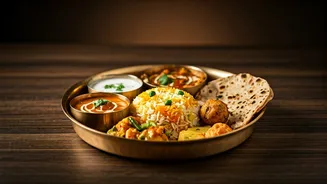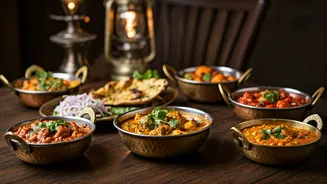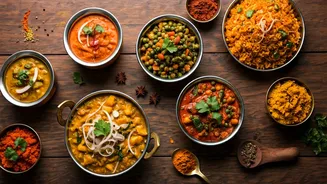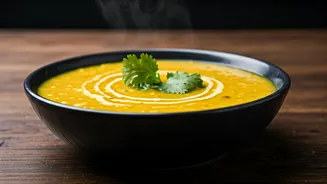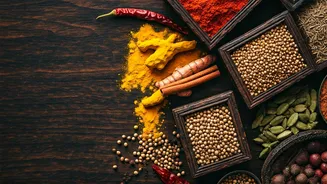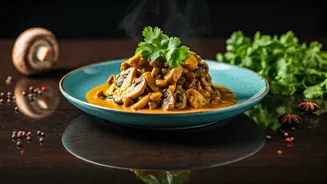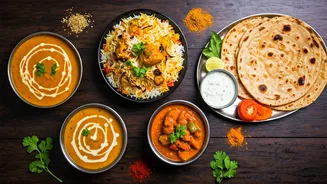Introduction to Mahabharata
The Mahabharata is an ancient Indian epic that continues to captivate readers. This epic provides a glimpse into the diverse lifestyles and cultures of
ancient India, including insights into their cuisine. The recipes within the Mahabharata were more than mere meals; they were expressions of the time. These dishes were an integral aspect of the story, symbolizing values, traditions, and the overall lifestyle during that period. The food often reflected the region's resources and the people's beliefs. Today, these recipes serve as a valuable link to the past, allowing us to taste the flavors of history.
Kheer (Rice Pudding)
Kheer, a creamy rice pudding, stands out as a symbol of celebration in many Indian traditions. It is made by slow-cooking rice with milk and sugar, often seasoned with cardamom and nuts. The Mahabharata mentions kheer as a special treat, served during festivals and auspicious occasions. In this recipe, the rice is gently simmered in milk until tender, forming a rich, comforting base. Sugar adds the sweetness, while cardamom lends an aromatic touch. Garnishing with nuts adds texture and visual appeal, making it a feast for the senses. Kheer embodies the simple yet elegant flavors of the era, offering warmth and a sense of togetherness, reminiscent of the communal spirit of the Mahabharata.
Vegetable Curry Medley
Ancient Indian meals often comprised various vegetable dishes that highlighted seasonal produce. The Mahabharata likely featured a variety of vegetable curries that were customized to what was available, reflecting the era's reliance on fresh, local ingredients. This curated assortment often included a medley of seasonal vegetables like eggplant, spinach, and beans, cooked in a blend of spices. These vegetables are cooked with aromatics like ginger, garlic, and onions. The use of spices like turmeric, cumin, and coriander provides depth and complexity. Each vegetable retains its individuality while harmonizing with others, delivering a balanced and nutritious meal. This approach mirrored the agricultural cycles and the community's commitment to enjoying fresh ingredients. This dish showcases the importance of a healthy, wholesome diet in ancient times.
Dal (Lentil Soup)
Dal, or lentil soup, has always been a staple in Indian cuisine. The Mahabharata era would have seen lentils as a crucial source of protein and essential nutrients. It was a basic yet satisfying dish prepared with various lentils, such as masoor dal or toor dal, simmered with water, and seasoned with spices. The lentils are cooked until soft and creamy, often flavored with spices like turmeric, cumin, and coriander, alongside ginger, garlic, and sometimes tomatoes. Garnishing with fresh coriander leaves adds brightness and freshness. This dish provides a hearty and nourishing meal, embodying the simplicity and nutritional value that were essential during that time. The dal's easy preparation and nourishing qualities made it a mainstay in the kitchens of the Mahabharata period.
Raita (Yogurt Dip)
Raita, a cool yogurt-based side dish, offers a welcome balance to the rich spices of Indian cuisine. The Mahabharata times likely included raita as a way to soothe the palate and aid digestion after meals. This recipe combines creamy yogurt with fresh ingredients like cucumber, tomatoes, and herbs like coriander. A gentle tempering of mustard seeds and cumin seeds adds a delicate warmth. This light and refreshing accompaniment not only tastes good but also helps neutralize the heat and enhances the flavors of the main dishes. It demonstrates how ancient chefs balanced textures and tastes, creating a culinary experience that was both satisfying and mindful. It is a light counterpoint to the more intense flavors of the other dishes, adding harmony to the meal.
Pakoras (Fritters)
Pakoras, or fritters, are deep-fried snacks, beloved throughout Indian cuisine. The Mahabharata likely featured these as part of festive gatherings. The vegetable choices might have varied depending on availability, but the essential cooking technique of deep-frying would have remained constant. In the traditional preparation, vegetables like onions, potatoes, or spinach are coated in a spiced chickpea flour batter. These are then deep-fried until golden brown and crispy. The spices used would have been determined by the region and available resources, providing a diverse array of tastes. This crispy snack would have served as a source of energy and an enjoyable part of the dining experience, showcasing the ancient people's love for indulgence and the festive aspect of food.
